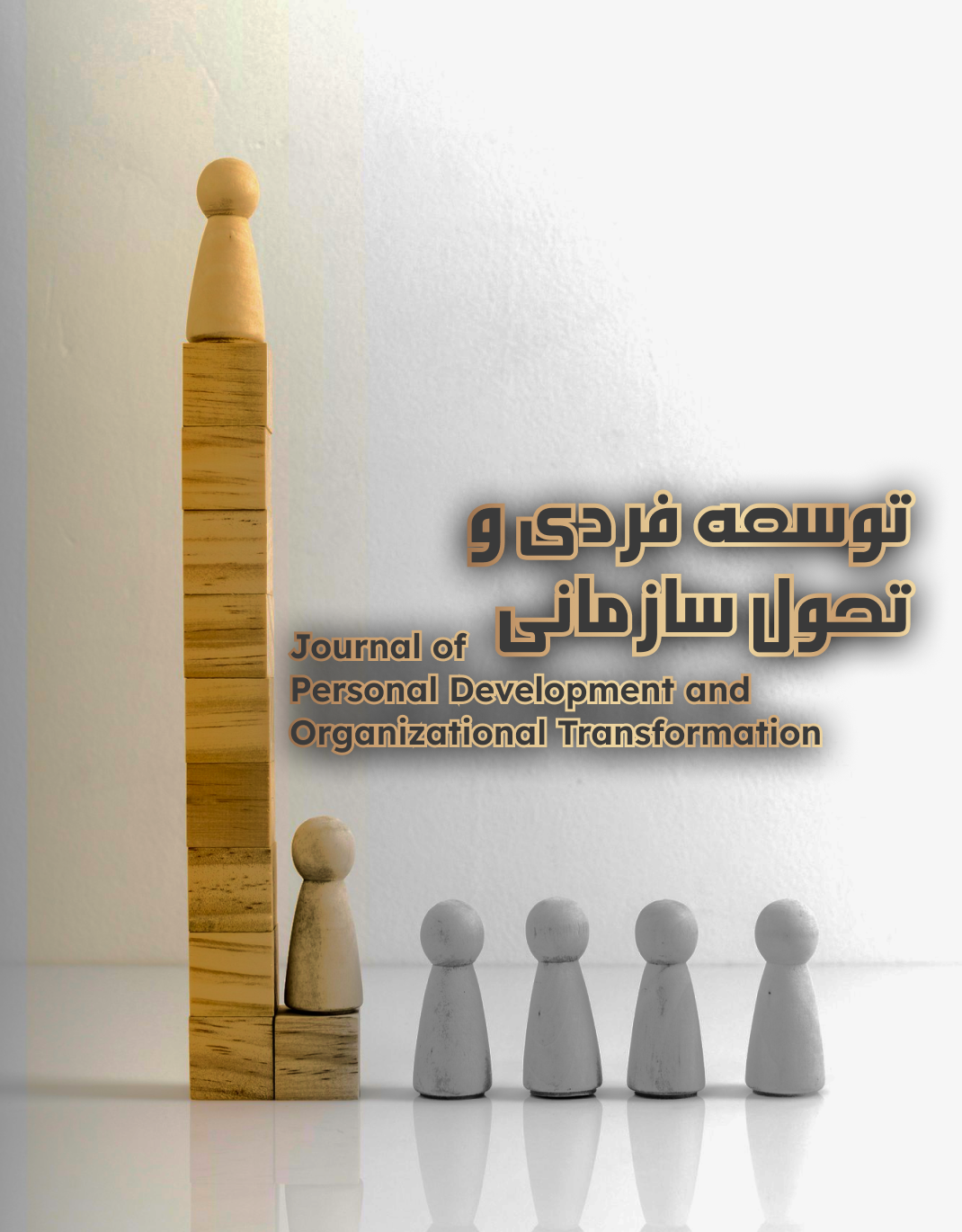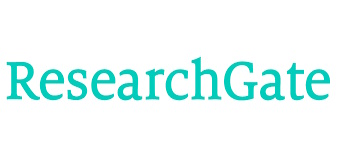اعتبار یابی مدل مفهومی آموزش ترکیبی در بین دانشجویان پرستاری
کلمات کلیدی:
آموزش مبتنی بر رویکرد ترکیبی, پداگوژی آموزش, اهداف آموزش, محتوای آموزش, روش های آموزش, دانشگاه علوم پزشکی لرستانچکیده
پژوهش حاضر با هدف اعتبار یابی مدل مفهومی آموزش ترکیبی در بین دانشجویان پرستاری علوم پزشکی لرستان انجام شد. در پژوهش حاضر جامعه آماری در بخش کیفی شامل خبرگان و صاحبنظران در حوزه آموزش پزشکی و مدیران بخش پرستاری و اساتید (هیأت علمی) بخش پرستاری با توجه به سنوات و تجربه خاص در حوزه آموزش پزشکی در دانشگاه علوم پزشکی لرستان به تعداد 15 نفر بودند و جامعه آماری در بخش کمی شامل کلیه دانشجویان پرستاری مشغول به تحصیل در دانشگاه علوم پزشکی لرستان در سال تحصیلی1402-1401 بودند. در مرحله کمی، حجم نمونه با بکارگیری فرمول کوکران، 209 نفر تعیین و به شیوه نمونه گیری تصادفی طبقه ای انتخاب شدند. تحقیق حاضر از نوع رویکرد آمیخته یا ترکیبی بود. همچنین پژوهش حاضر از لحاظ هدف، بنیادی و برحسب نحوه گردآوری اطلاعات، توصیفی-پیمایشی بود. ابزار تحقیق حاضر در بخش کیفی شامل مصاحبه نیمه ساختارمند و بررسی ادبیات و پیشینه تحقیق بود و در بخش کمی پرسشنامه محقق ساخته 41 سوالی که سوالات آن مستخرج از یافتههای کیفی بود. یافتههای حاصل از مرحله کیفی به شیوه سندکاوی، مطالعه کتابخانه ای و تحلیل تم و روش دلفی مورد تجزیه و تحلیل قرار گرفتند. و در بخش کمی از آزمونهای تحلیل عامل تاییدی برای بررسی روایی همگرایی و مدل معادلات ساختاری استفاده شد با استفاده از نرم افزار اس پی اس اس و آموس انجام شد. نتایج مرحله کیفی نشان داد مدل آموزش مبتنی بر رویکرد ترکیبی در قالب 5 مولفه پداگوژی آموزش، اهداف آموزش، محتوای آموزش، روشهای آموزش و ارزشیابی آموزشی پدیدار گردید. نتایج حاصل از تحلیل دادهها در بخش کمی نشان داد که شاخصهای برازش مدل به جز شاخص GFI و NFI بیشتر از 9/0 و از وضعیت مطلوبی برخوردار هستند. همچنین مقدار كای اسكوئر مدل از 3 کمتر است و این نشان از آن دارد كه دادههای تجربی به نحو مناسبی از مدل مفهومی پژوهش حمایت میكنند. همچنین مقدار ریشه میانگین مربعات خطای برآورد در حد 05/0 است و این شاخص نیز برازش مدل را تایید میكند. شاخصهای برازش مدل مورد نظر بیانگر این است که یک برازش کافی بر روی دادهها فراهم است. این بخش، الگوی مفهومی پژوهش ترسیم و با استفاده از روش حداکثر درست نمایی برازش آن سنجیده شد.
دانلودها
مراجع
Akbari Pourang, M., Ajam, A. A., Jafari Sani, H., Salabari, R., & Shokouhifard, H. (2016). Designing and validating a quality virtual teaching model in Iran's higher education system. Qualitative Research in Curriculum Studies, 1(2), 73-106. https://www.dfsr.ir/article_242407.html
Anthony, B., Kamaludin, A., Romli, A., Raffei, A. F. M., Abdullah, A., Ming, G. L., & Baba, S. (2019). Exploring the role of blended learning for teaching and learning effectiveness in institutions of higher learning: An empirical investigation. Education and Information Technologies, 24(6), 3433-3466. https://doi.org/10.1007/s10639-019-09941-z
Bhardwaj, P., Bhardwaj, N., Mahdi, F., Srivastava, J. P., & Gupta, U. (2015). Integrated teaching program using case-based learning. International Journal of Applied and Basic Medical Research, 5(Suppl 0), S70. https://doi.org/10.4103/2229-516X.162262
Boelens, R., Voet, M., & De Wever, B. (2018). The design of blended learning in response to student diversity in higher education: Instructors views and use of differentiated instruction in blended learning. Computers & Education, 120, 197-212. https://doi.org/10.1016/j.compedu.2018.02.009
Bonk, C. J., & Graham, C. R. (2011). The handbook of blended learning environments: Global perspectives, local designs. Jossey Bass / Pfeiffer. https://books.google.com/books?hl=en&lr=&id=mvfXEAAAQBAJ&oi=fnd&pg=PT14&dq=Bonk,+C.+J.+and+C.+R.+Graham+(2011).+The+handbook+of+blended+learning+environments:+Global+perspectives,+local+designs.+San+Francisco,+Jossey+Bass+/+Pfeiffer.+%09&ots=VuoiZSj2i9&sig=YSLSLvJoAzZncraZH_Z1qtzQMB8
Dadgaran, N., Bagheri, M., & Ahmadi, A. (2020). Identifying the dimensions and components for enhancing the medical education system at the international level using the Delphi technique. Research in Medical Education, 12(1), 52-77. https://doi.org/10.29252/rme.12.1.52
Ghorbani, S., Pishinian Pordanjani, M., Oloumi, F., & Piri, F. (2024). Investigating the Impact of Blended Learning in Iran's Education System. First International Conference on Education with an Approach to Smart Schools, Creative Teachers, and Thoughtful Students in the Horizon of 2025, https://civilica.com/doc/2177886
Ismail, A. O., Mahmood, A. K., & Abdelmaboud, A. (2018). Factors influencing academic performance of students in blended and traditional domains. International Journal of Emerging Technologies in Learning, 13(2), 170-187. https://doi.org/10.3991/ijet.v13i02.8031
Jowsey, T., Foster, G., Cooper-Ioelu, P., & Jacobs, S. (2020). Blended learning via distance in pre-registration nursing education: A scoping review. Nurse Education in Practice, 102775. https://doi.org/10.1016/j.nepr.2020.102775
Karimi, H., Kalati, S. H., Amini, S., & Jamalzadeh, N. (2021). The impact of blended learning on the nursing process: An educational evaluation study. Iranian Journal of Medical Education, 21(54), 533-536. https://ijme.mui.ac.ir/browse.php?a_id=5354&sid=1&slc_lang=fa
Karimi Moonghi, H., & Mohseni Zadeh, S. M. (2019). Integrated learning and its effectiveness in nursing education: A review study. Quarterly Journal of the Center for Studies and Development of Medical Education, 1, 29-40. https://www.sid.ir/paper/228752/fa
Liu, B. (2024). Research on Personalized Teaching Strategies Based on Learner Profiles in a Blended Learning Environment. International Journal of Information and Communication Technology Education, 20(1), 1-25. https://doi.org/10.4018/ijicte.346823
Liu, Y. (2024). The Impacts of Learning Motivation, Emotional Engagement and Psychological Capital on Academic Performance in a Blended Learning University Course. Frontiers in psychology, 15. https://doi.org/10.3389/fpsyg.2024.1357936
Mir-Moghtadaei, Z. S., & Ahmadi, S. (2019). The effectiveness of blended learning in medical education: Clarifying dimensions and components based on stakeholders' experiences. Journal of Medical Education Development, 12(33), 33-42. https://doi.org/10.29252/edcj.12.33.42
Oakley, G. (2016). From Diffusion to Explosion: Accelerating Blended Learning at the University of Western Australia (Blended, Issue.
Pourghan, P., Imami Sigaroodi, A., & Salari, A. (2018). Experiences of faculty members at Gilan University of Medical Sciences regarding participation in continuous education programs in 2016-2017: A qualitative study. Research in Medical Education, 10(1), 10-20. https://doi.org/10.29252/rme.10.1.20
Rajabian De Zireh, M., Nazari Shendi, M., Jangi Zahi, H. R., & Hoseini, S. M. A. (2021). The impact of blended learning on self-concept and academic motivation of students. Education in Police Sciences, 9(35), 1-180. https://sid.ir/paper/952086/fa
Sadeghi Tabr, P., & Shariati Mard, M. (2020). Designing and validating a model for continuous education in the medical community based on blended learning. Quarterly Journal of Educational Sciences and Psychology: Research in School and Virtual Learning, 8(1), 79-97. https://etl.journals.pnu.ac.ir/article_6947.html
Thahir, M., Widiawati, W., & Baitillah, N. (2023). The Post-Pandemic Education: A Blended Learning Approach for Teaching and Learning in Higher Education in the New Normal Era. International Journal of Ethno-Sciences and Education Research, 3(3), 99-108. https://doi.org/10.46336/ijeer.v3i3.461
Tong, Y., & Wei, X. (2020). Teaching design and practice of a project-based blended learning model. International Journal of Mobile and Blended Learning (IJMBL), 12(1), 33-50. https://doi.org/10.4018/IJMBL.2020010103
Wang, C., Omar Dev, R. D., Soh, K. G., Mohd Nasirudddin, N. J., Yuan, Y., & Ji, X. (2023). Blended learning in physical education: A systematic review [Systematic Review]. Frontiers in Public Health, 11. https://doi.org/10.3389/fpubh.2023.1073423
Wang, Y., Han, X., & Yang, J. (2015). Revisiting the blended learning literature: Using a complex adaptive systems framework. Journal of Educational Technology & Society, 18(2), 380-393. https://www.jstor.org/stable/pdf/jeductechsoci.18.2.380.pdf
Wichadeeq, S. (2017). A Development of the Blended Learning Model Using Edmodo for Maximizing Students' Oral Proficiency and Motivation. International Journal of Emerging Technologies in Learning, 12(2). https://doi.org/10.3991/ijet.v12i02.6324
Wilkes, S., Kazakoff, E. R., Prescott, J. E., Bundschuh, K., Hook, P. E., Wolf, R., & Macaruso, P. (2020). Measuring the impact of a blended learning model on early literacy growth. Journal of Computer Assisted Learning, 36(5), 595-609. https://doi.org/10.1111/jcal.12429
Williams, R. T. (2024). An overview of MOOCs and blended learning: integrating MOOC technologies into traditional classes. IETE Journal of Education, 65(2), 84-91. https://doi.org/10.1080/09747338.2024.2303040
Winarso, W., & Udin, T. (2024). Implementing Blended Learning Within the TPMK Framework to Enhance Mathematics Teachers' Competence. Edelweiss Applied Science and Technology, 8(4), 2292-2305. https://doi.org/10.55214/25768484.v8i4.1599
Zare, M., Nili, M. R., Ali Abadi, K., Zarei Zavarki, E., & Asgari, M. (2024). The effectiveness of a blended e-learning design model on academic performance of Farhangian University students. Educational and Instructional Studies(40), 126-136. https://pma.cfu.ac.ir/article_3895.html?lang=en
Zarebian, F., Saeed, N., & Goudarzi, M. (2017). Principles of Educational Planning. Payame Noor University Publications.
دانلود
چاپ شده
ارسال
بازنگری
پذیرش
شماره
نوع مقاله
مجوز
حق نشر 2025 Nahid Dehghankar (Author); Mehry Daraei; Hossein Mehrdad (Author)

این پروژه تحت مجوز بین المللی Creative Commons Attribution-NonCommercial 4.0 می باشد.







